

Matt Campbell
2025 Porsche 911 Carrera T review
6 Days Ago
Audi has thrown everything short of the kitchen sink at the S6 and S7. They're brilliant, but whether they can drag buyers from SUVs remains to be seen.
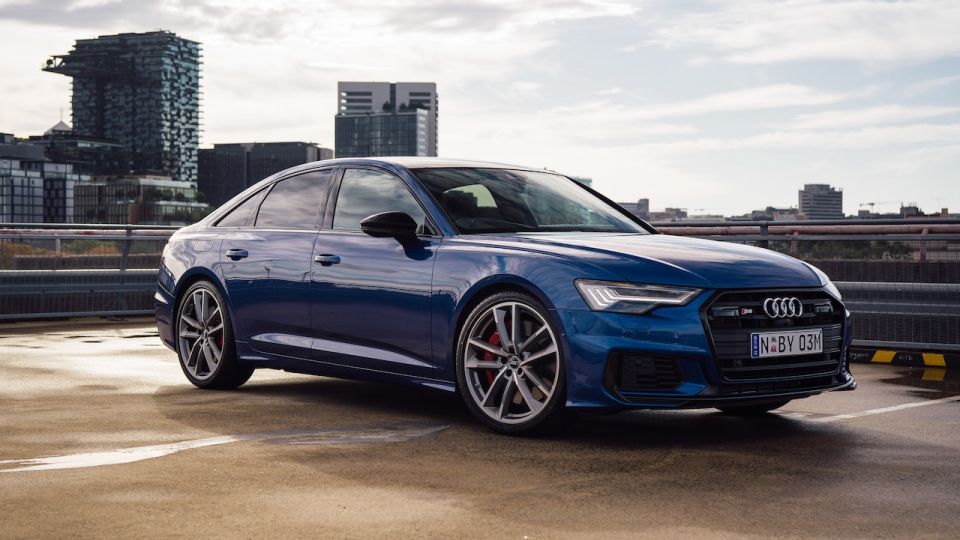
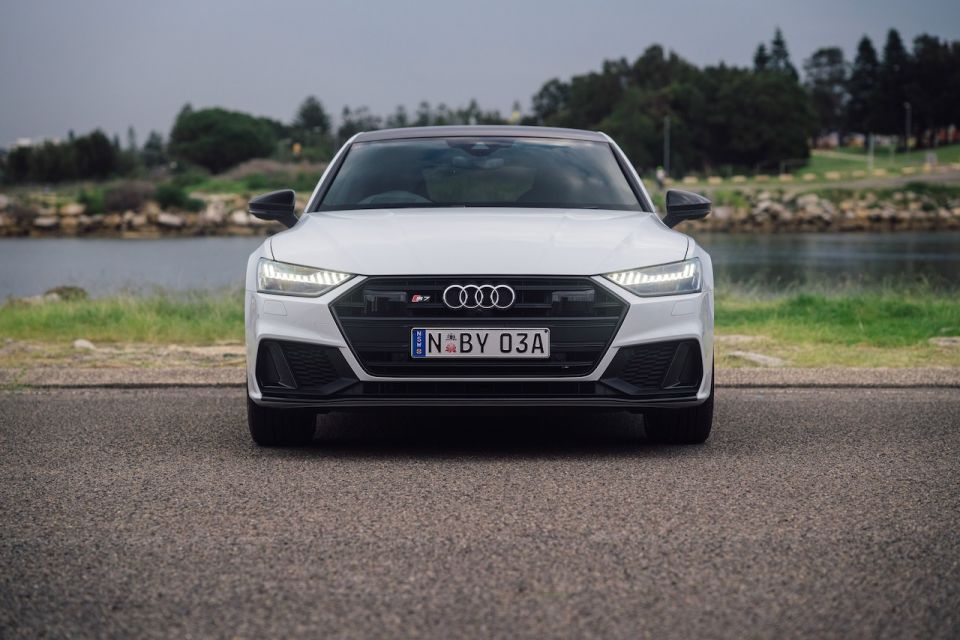

Senior Road Tester
New from
$149,536
excl. on-roads

Senior Road Tester
New from
$149,536
excl. on-roads


Senior Road Tester
New from
$149,536
excl. on-roads

Senior Road Tester
New from
$149,536
excl. on-roads
Quickly see how this car stacks up against its competition. Select any benchmark to see more details.
Where expert car reviews meet expert car buying – CarExpert gives you trusted advice, personalised service and real savings on your next new car.
Given the popularity of luxury high-performance SUVs, I honestly thought performance sedans were all but dead and buried. Didn’t you?
Apparently not. The buyers for these high-performance, high-tech sedans are predominantly highly-educated, high-earning men aged between 45 and 64.
Moreover, these gentlemen have a penchant for technology and innovation, and like travel and nice restaurants. They also have an affinity for design, a focus on quality, and a competitive nature – or so the research says.

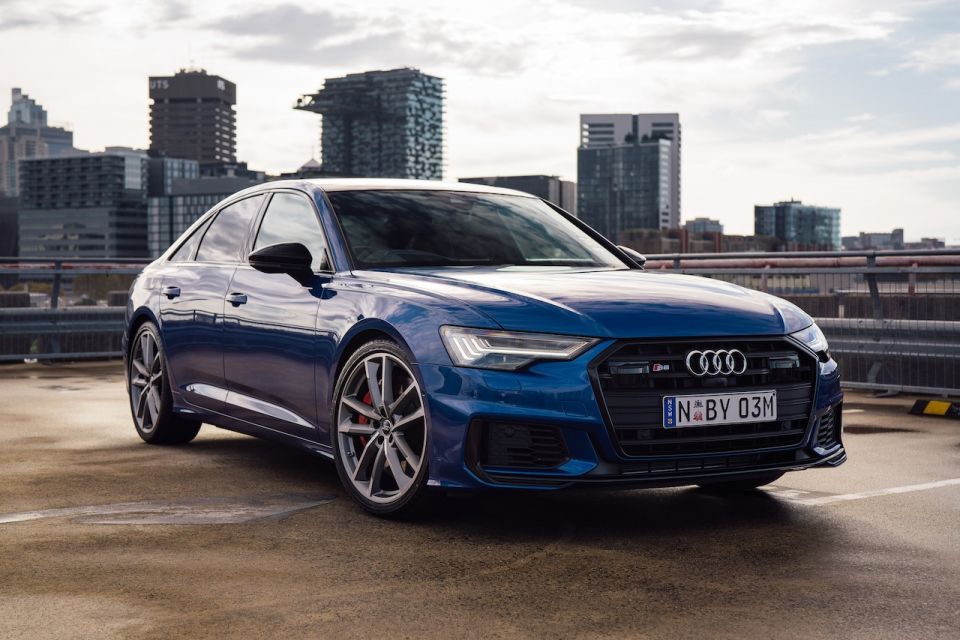
Which brings us to the raison d’être behind the continuation of the Audi S6 and Audi S7. Clearly, they aren’t just high-speed luxury assets designed to lap up the kilometres with pace and grace.
Instead, they represent the pinnacle of technology in the Audi range.
And while we lament the loss of Audi’s sonorous previous-generation V8, these new kids on the block use the latest 2.9 litre twin-turbo petrol V6 mill which is not only 26kg lighter, but generates exactly the same power.
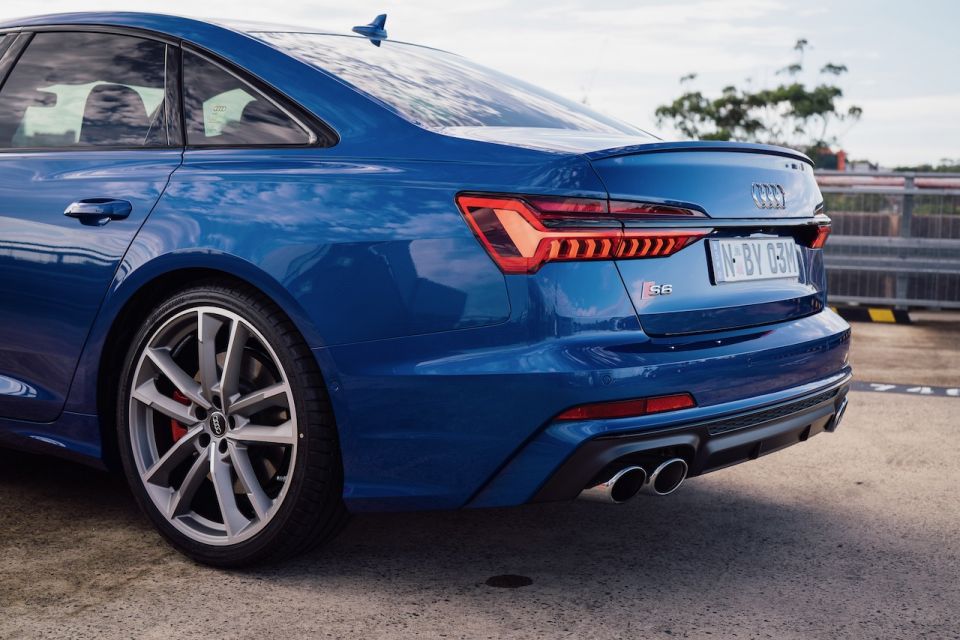
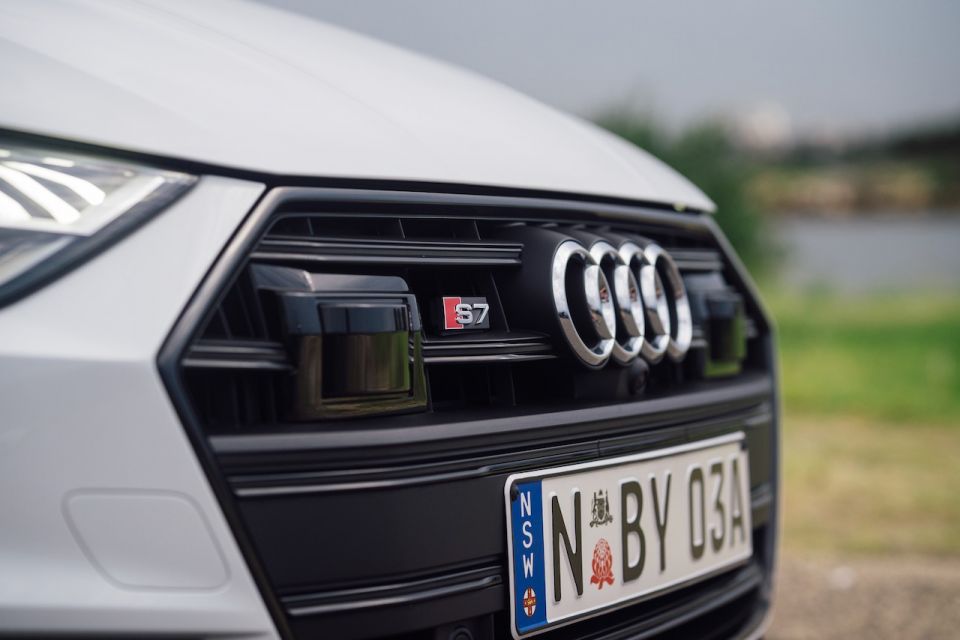
Mind, for those new to Audi or its S-badged range, they’re not quite the top echelon of the marque’s performance line-up.
That space is reserved for anything wearing four rings and an RSmoniker. You’ll pay more for the privilege, though.
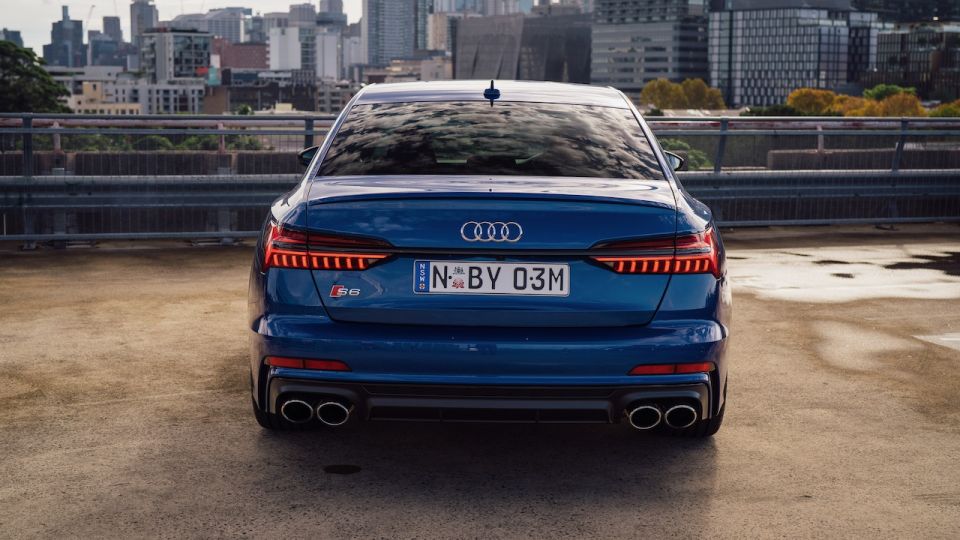

These latest S models represent a balance between performance and luxury, with perhaps a slight skew towards the latter – GT cars if you will – the range-topping RS versions are geared towards maximum attack.
Both the S6 and S7 share almost everything, but design-wise there are a few distinguishing features, not least of which is the fact the Audi S6 is a sedan where the Audi S7 is essentially a five-door hatchback.
It’s also longer, wider, and lower than the S6, but the overall design of both takes inspiration from the Audi Prologue Concept.
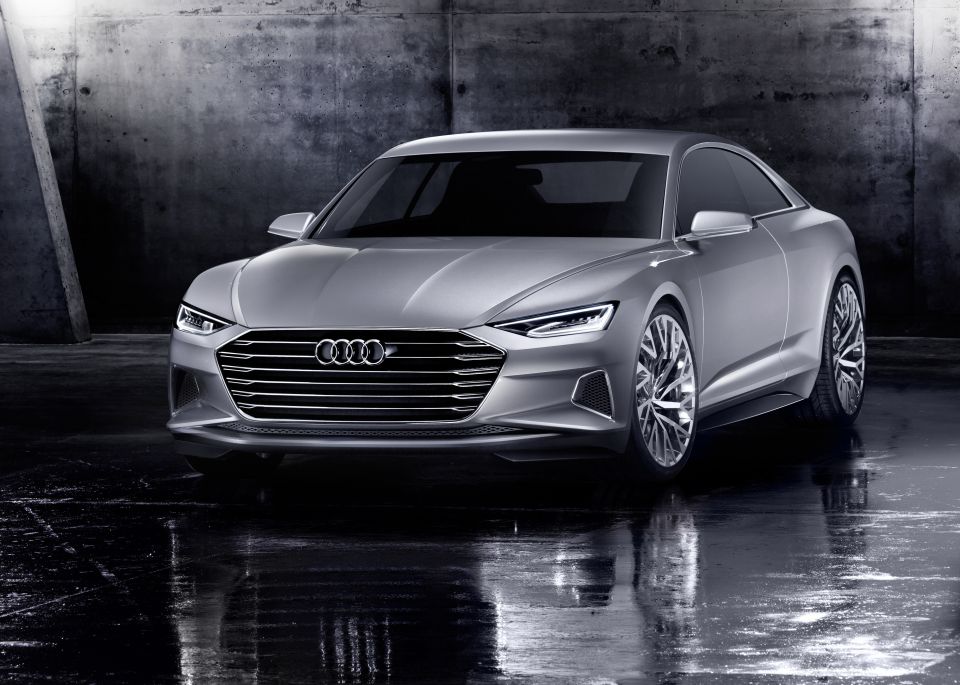
Horizontal character lines also feature heavily throughout the exterior and interior of the new cars in a nod to Audi’s legendary past performance cars.
Note the so-called quattro blisters on the new models, essentially pumped-up wheel arches designed to call rallying specials such as the quattro to mind, although they’re actually nicked from the super-wide IMSA GTO racers of the 1980s.
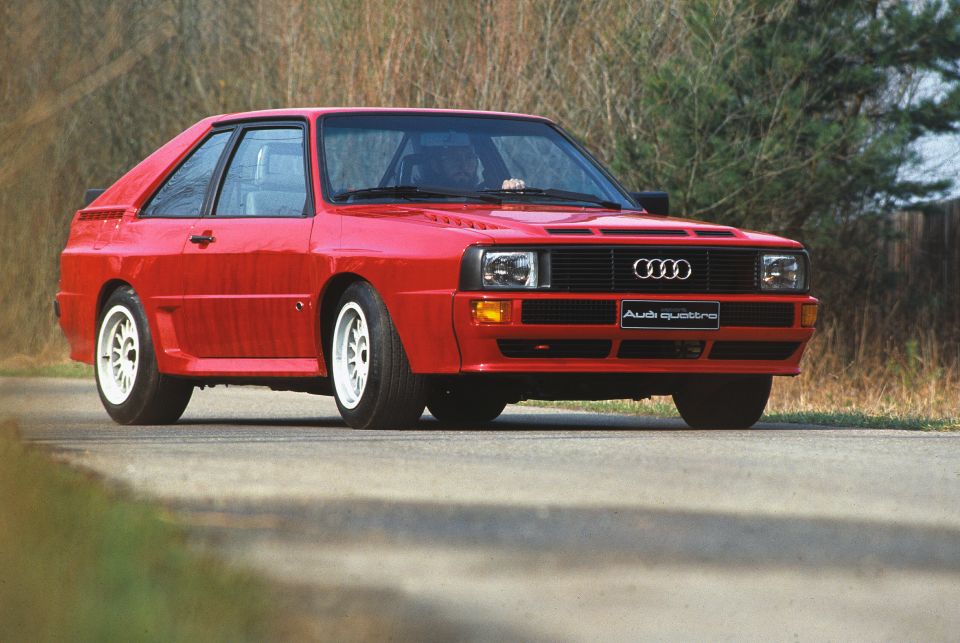

It’s rare to hear of carmakers launching performance models with new technology and equipment for less than previous versions, but that’s the strategy Audi has employed here
The S6 starts from $149,900 before on-road costs, which is more than $20,000 less than its predecessor, despite an extensive standard equipment list that leaves little room for options.
A similar pricing formula has been applied to the larger S7, which kicks off at $159,500 before on-road costs and is more than $20,000 less than the model it replaces.
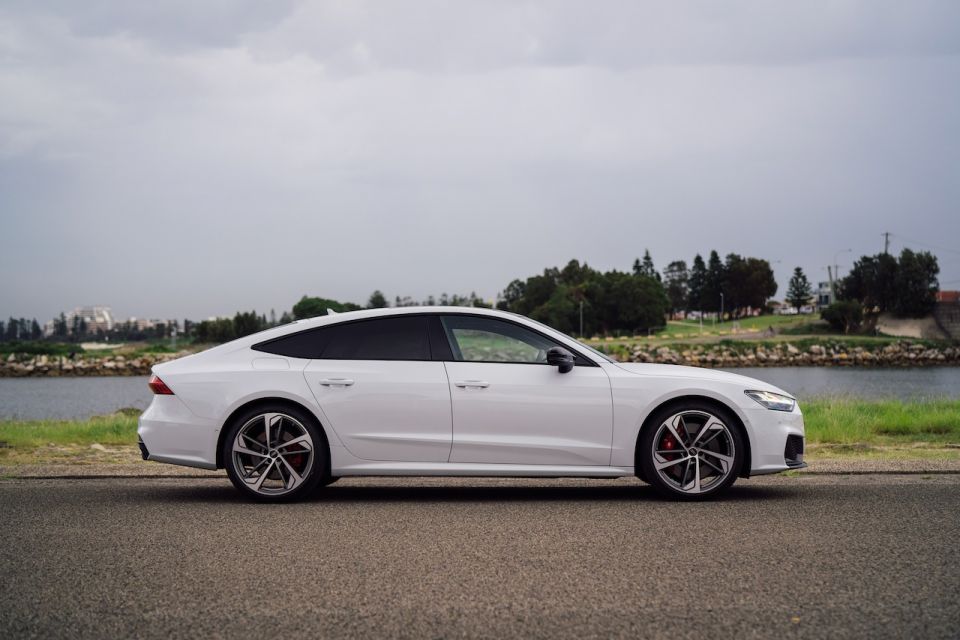
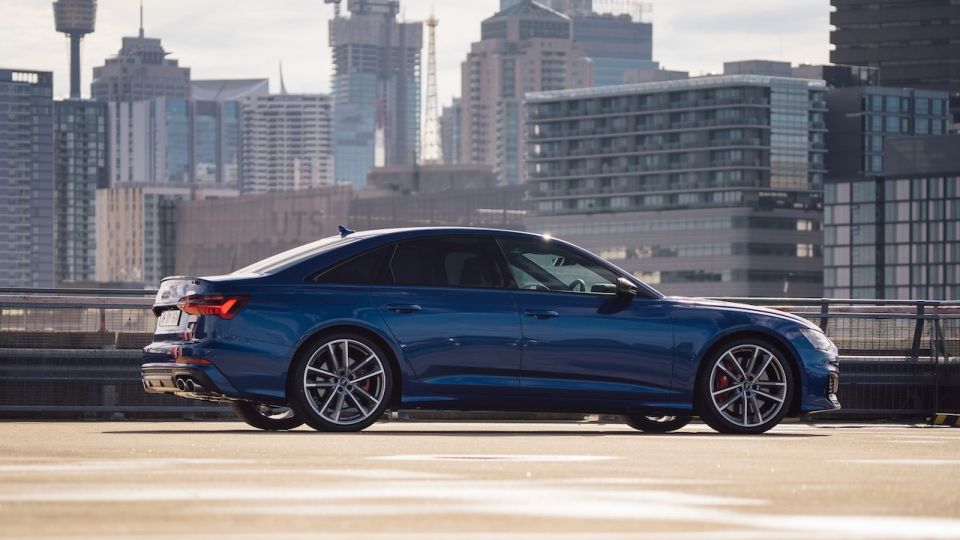
There are only three big-ticket items to splurge on if you want burger with the lot, the largest of which is carbon ceramic brakes with grey brake calipers for $18,000 on the S7 and $19,000 on the S6.
Our response to that offering would be to choose wisely, because both cars get standard 400mm front and 350mm rear units, although the carbon ceramics are lighter – and larger at the rear.
In keeping with their performance bent you might want to tick the $11,700 box that says Dynamic Package. It adds a sport differential, which actively distributes drive torque to the rear wheel with more traction.

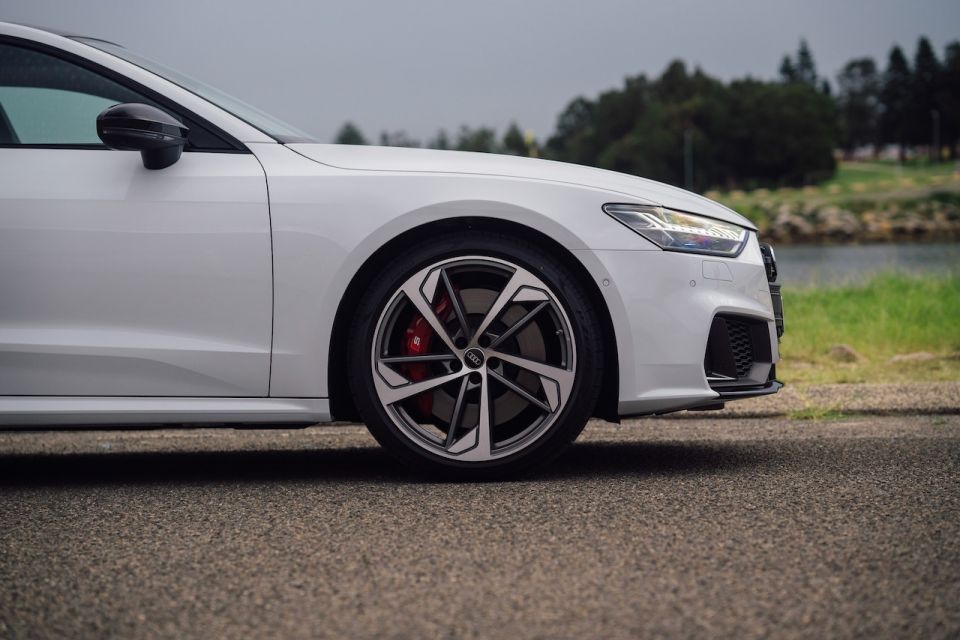
It also gives you dynamic steering, effectively variable-ratio steering customisable via the Drive Select menu. The difference between the various modes can be significant.
In Comfort the number of turns lock-to-lock is three, in Dynamic it’s reduced to just two turns and the rate of response is the same throughout its range.
All-wheel steering is also part of the package, which not only increases the general stability of the car but also reduces its turning circle by around a metre, making light work of tight underground carparks.
Finally, there’s an audio upgrade from the standard Bang & Olufsen sound system, with 19 speakers, 1820W, and illuminated speakers in front and rear doors. However, you forfeit the space-saver tyre in favour of a tyre inflation kit.
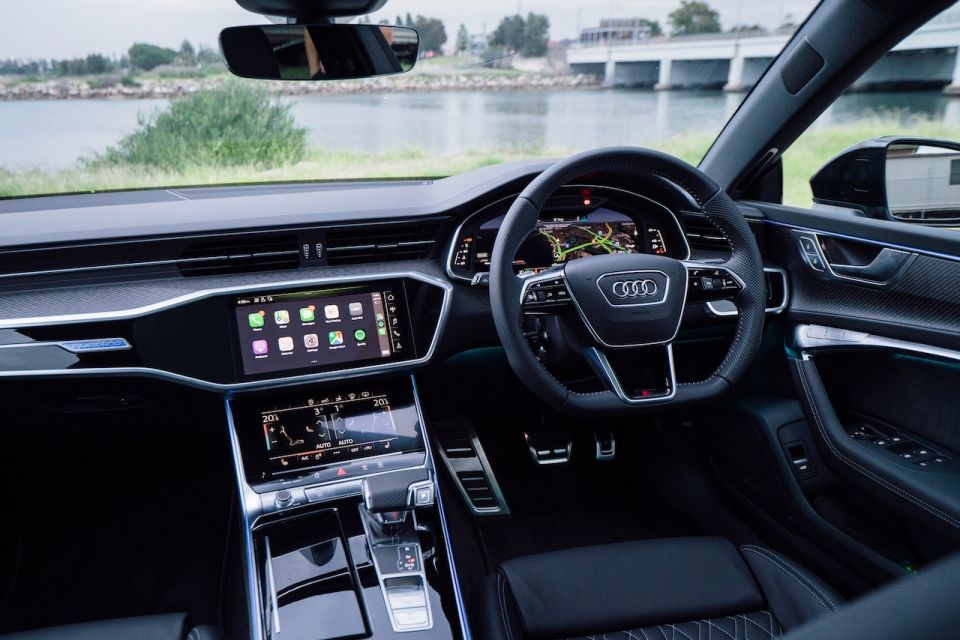
The answer is pretty much everything you can think of in the technology and safety spheres.
The inventory and equipment list is virtually the same for both models, and is nothing short of exhaustive.
Highlights would include Audi’s tricky high-definition Matrix LED headlights, which contain 32 LEDs in each unit.
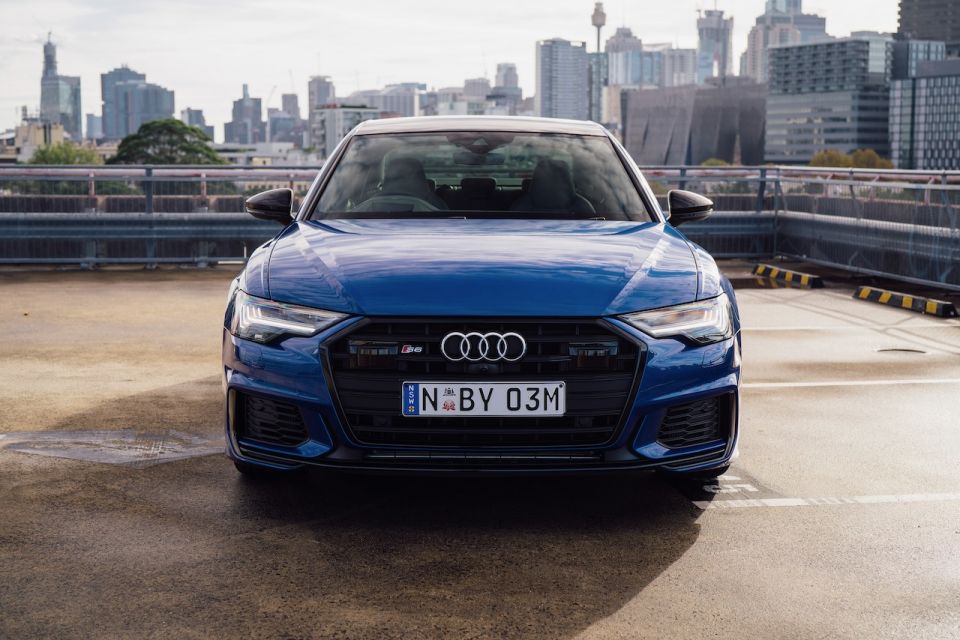

If, however, you regularly drive long distances at night you might consider an optional upgrade to Audi’s laser light system.
It adds extra lighting power at more than 70km/h by effectively doubling the visual range, but costs an additional $2500.
Audi’s exit warning plus system gives you a visible warning cars or cyclists are approaching before open the door – and the technology will prevent you from opening the door if it senses a collision, though can be overridden in an emergency by double pulling the door handle.
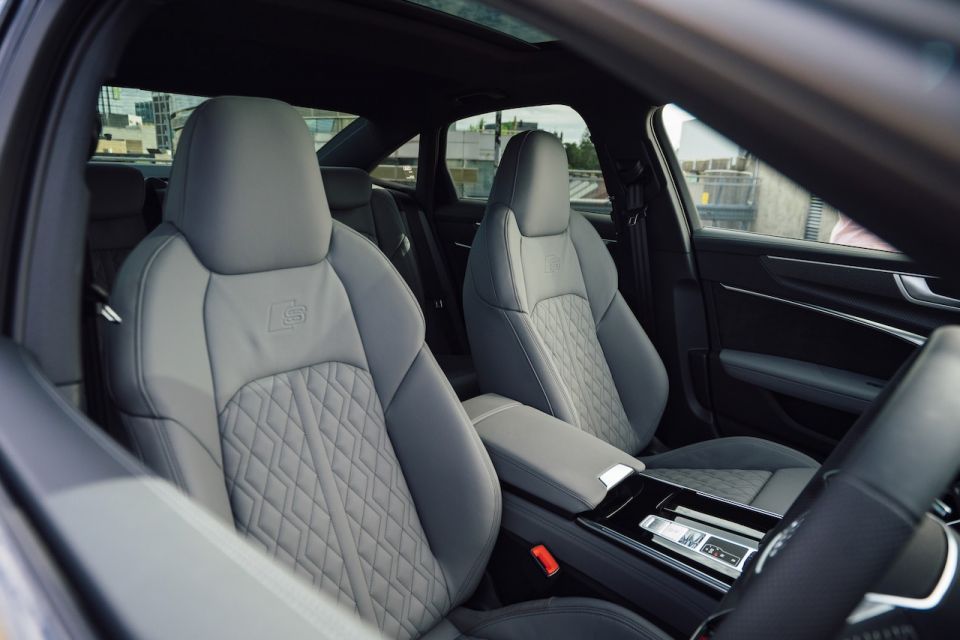
What about loose wheel detection – a system which detects one or more of the wheels haven’t been put on correctly (after say a puncture repair). You may never use it, but it also could be a lifesaver.
Both models also get S Sport front seats, although the S7 gets Sport seats in the rear as well. They’re wrapped in Audi’s finest Valcona leather, the same as what’s used in the flagship Audi A8.
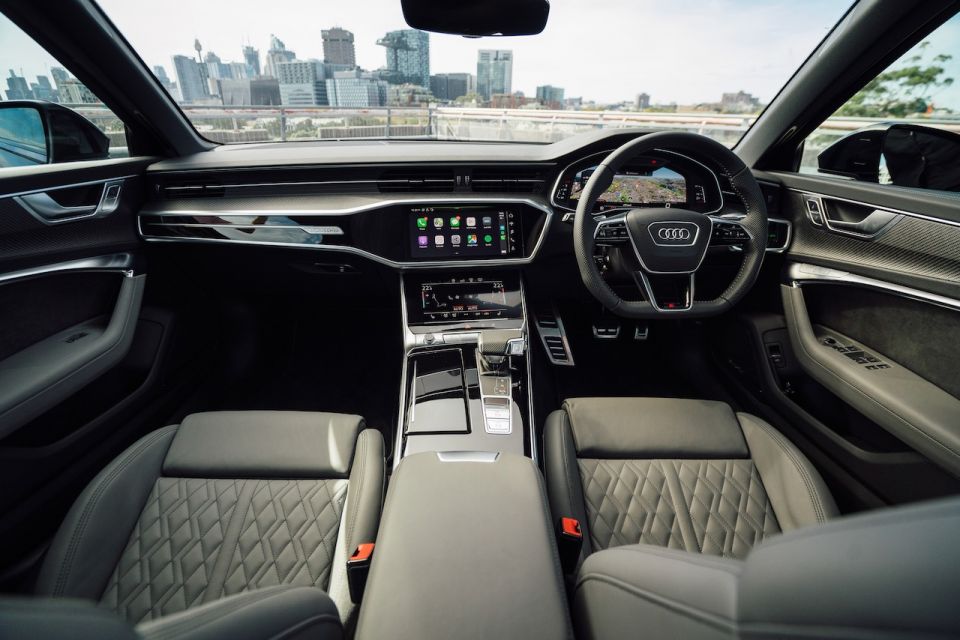
These cars come with all the usual kit, too, such as keyless entry and start, gesture control for the boot, a panoramic glass sunroof, wireless phone charging, and wireless Apple CarPlay, electrically-operated front seats with heating, four-zone climate control, and electric steering column adjustment.

Audi has equipped these cars with every available active safety feature today.
Naturally, both cars have been awarded a five-star ANCAP safety rating and boast features such as adaptive cruise assist with stop/go, including traffic-jam assist.

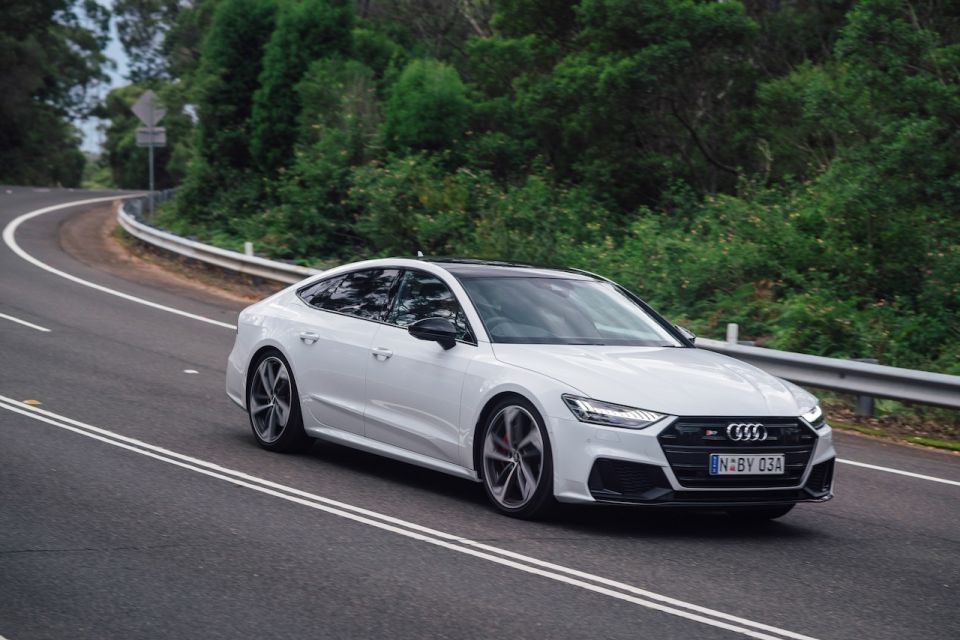
Where expert car reviews meet expert car buying – CarExpert gives you trusted advice, personalised service and real savings on your next new car.
There’s lane-keeping assist, active side assist and attention assist – all of which will make sure you’re awake and firmly in the centre your lane
You also get collision-avoidance assist and rear cross-traffic alert, as well as intersection crossing assist
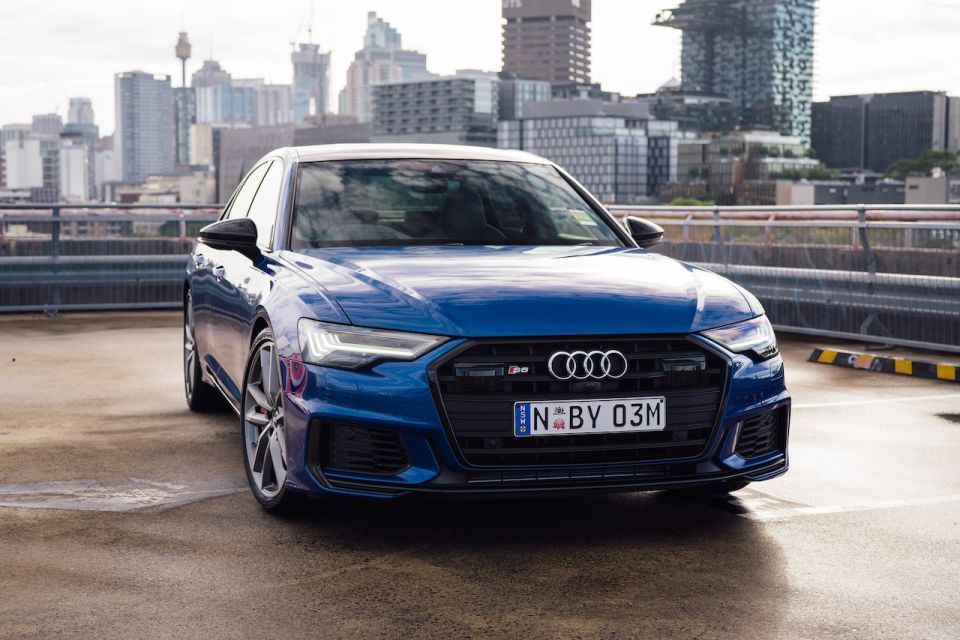
Just when you thought BMW and Mercedes-Benz have caught up to Audi with their interior fit outs, Audi rolls out the red carpet with a near perfect blend of cutting-edge technology, luxurious materials and a peerless look and feel to their latest cockpits.
Interestingly, there’s less of an emphasis on fine metal finishes and more on the soft tactile stuff, like the Nappa leather adorning the dashboard, centre console, door rails and armrests with contrast stitching.
Both test cars were also fitted with the optional carbon twill inlays immediately under the dash and on the upper parts of the door cards.
It’s the real deal. You can feel the weave because there’s no shiny lacquer on top, just the carbon-fibre. It really is the perfect visual presentation to cap off this pair of quick Audis.
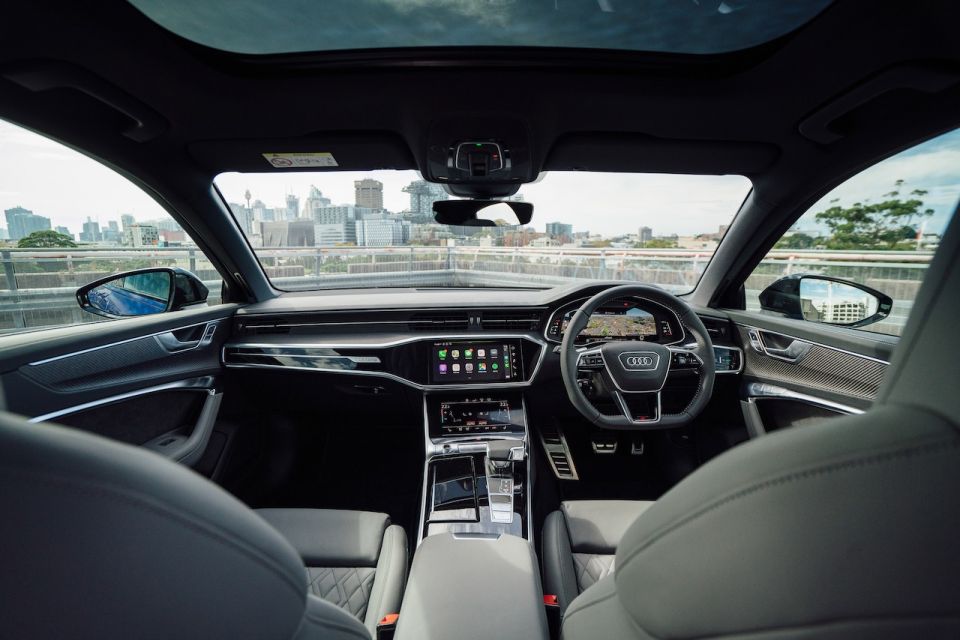

Audi still does some of the best brightwork, too, and in the S models it’s a good spread of the usual brushed matte aluminium inlays that offset the bounty of soft touch surfaces.
Those heavily-contoured sport seats upholstered in super-soft Valcona leather are a real treat, especially on longer drives – you never feel tired, and the bolsters lock you in tight when you want to give it a nudge in the twisty bits.
It’s hard to top Audi when it comes to a proper flat-bottom leather wrapped steering wheel. The thickness of the rim and various contours are just about perfect, as is the slightly padded and perforated wheel itself.

It’s the same story with the huge 12.3-inch digital instrument display, dubbed Virtual Cockpit. The clarity, colour, and customisation is second to none, and these S models get a unique signature in the central rev counter with figures shown in red on a black background.
If that’s not enough, both the Audi S6 and Audi S7 also get a similarly sharp head-up display that also shows navigation in equally vibrant colour.
The infotainment screen isn’t exactly small, measuring 10.1-inches and packing the best haptic feedback we’ve yet to experience in a car. Below that is a slightly smaller screen housing the car’s climate control functions. It’s all neatly laid out in a driver-centric manner.
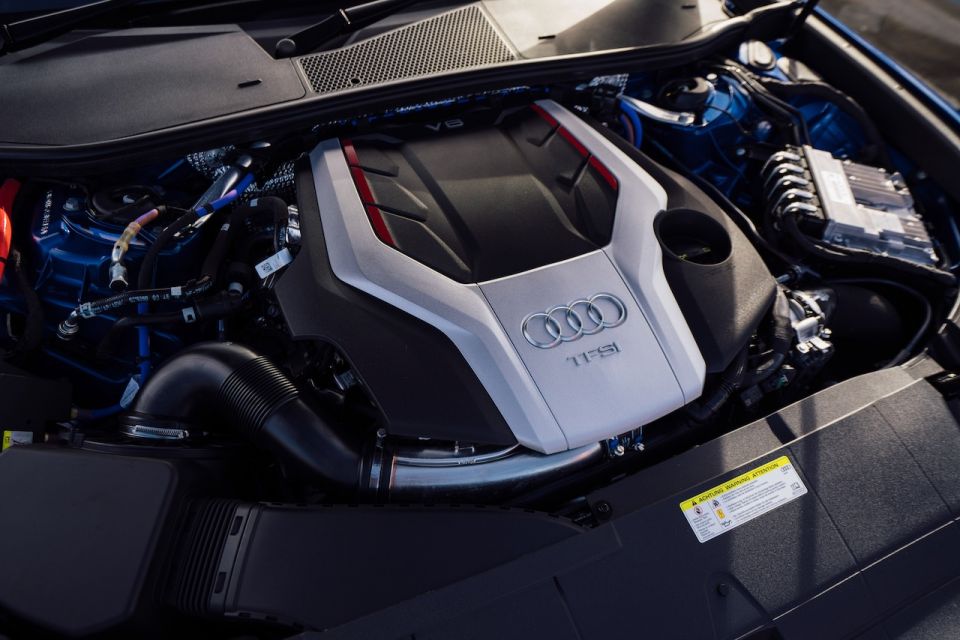
This is where Audi moves ahead of the game using an electric-powered compressor paired to a 2.9-litre, twin-turbocharged TFSI V6 engine that chimes in to build boost pressure, sharpen throttle response and reduce turbo lag.
The 48V mild-hybrid system and EPC were pioneered on the first-generation SQ7 TDI a few years ago, but the S6 and S7 are the first petrol cars to use the system for Audi.
Both the S6 and S7 use exactly the same drivetrain, which makes 331kW of power and 600Nm of torque from just 1900rpm, sending the S6 from 0-100km/h in a swift 4.5 seconds through an eight-speed auto transmission driving all four wheels.
First up was the S6 for this tester. Despite its focus on performance, our initial 50km was a fairly mundane experience allowing us to experience the comfort side of things while messing around with suspension settings and drive modes.
However, we soon realised you don’t have to be going quickly to enjoy the Audi’s delightful exhaust note. A racing-style snarl is how I’d describe it, outside and inside the cabin.
Naturally, the noise gets louder as the revs rise with a bit more bass. Initially, I wound the windows down for the full audio effect, but the sound inside the cabin is almost identical and that’s not normally the case.
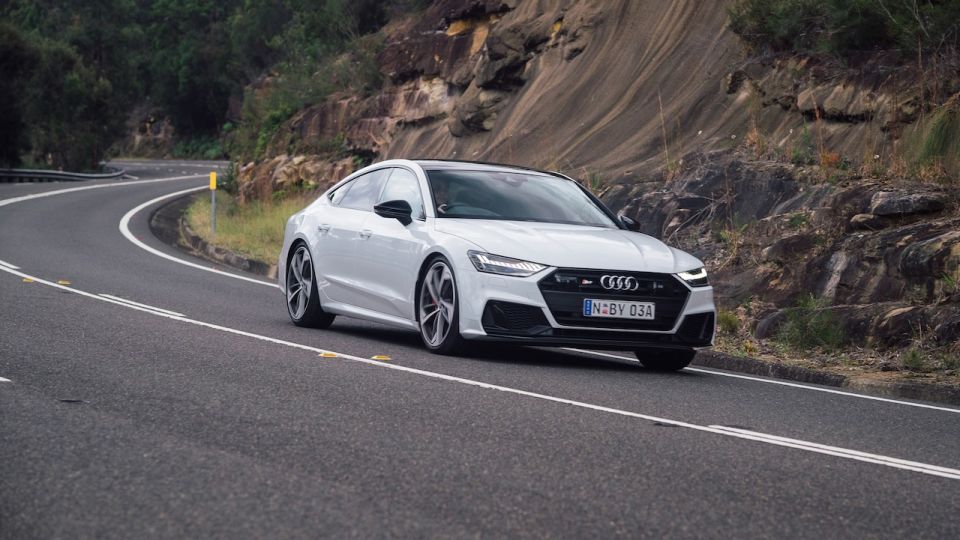
What struck me most on the commute down to the national park south of Sydney was how well the S6 and S7 rode on some fairly average bitumen – on huge 21-inch alloy wheels. Put that down to the car’s adaptive air suspension with variable damping which can be set to three different modes.
Mostly, we left it the mid-range Auto mode where it effectively flattened any uneven surfaces and bumps, but still offered feedback through the steering wheel. We deliberately sought out the worst of the broken roads and there was barely a ripple felt through the cabin.
On some of the twistier sections inside the national park we cycled into the Dynamic setting and, even with ride height at its lowest and the suspension at its firmest, the ride was comfortable. It’s really quite impressive.

Occasionally, we had the opportunity to give the S6 a squirt through some beautifully-cambered bends to confirm the consistency and limpet-like grip levels that you get from the car’s quattro all-wheel drive system. On some tighter turns you can feel the effect of the car’s progressive steering as it tightens up the lock, requiring less effort and less arm twirling.
It never really feels anything but perfectly balanced. That’s down to the self-locking centre differential distributing torque between the front and rear axle in a 40:60 ratio, and the car’s wheel-selective torque control that controls essentially stops any potential wheel spin during the turn. The car feels lighter through corners for it.
By rights any potential turbo lag should be completely eradicated thanks to the S-car’s electric powered compressor that effectively handles the rise in boost pressure whenever there’s not enough exhaust gas energy to power the turbochargers.
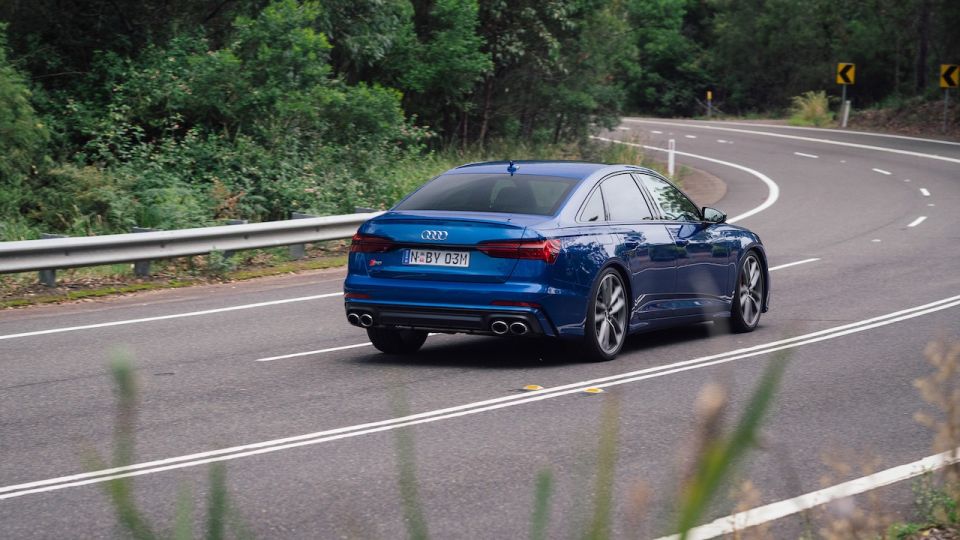
And while throttle response is very good, there’s still a moment when you bury the accelerator pedal before blast-off occurs. With a relatively short and speed-controlled drive, it’s difficult to isolate the issue between the gearbox response in kicking down a few gear ratios and turbo lag.
But from speeds as low as 40-50km/h or less – there was still some delayed response – though, I’ll admit it’s relatively subtle in Dynamic.
Get out on the open road, though, and performance feels very strong, yet effortless at the same time. It’s a real pity we couldn’t open it up on a fast-European road as both cars felt enormously capable. Proper Grand Tourers.
Both the S6 and S7 are incredibly fuel efficient consuming 8.5L/100km on a combined cycle. The mild hybrid technology and 48-volt electrical system can effectively reduce consumption by up to 0.4L/100km.
Moreover, if the driver takes their foot off the accelerator at speeds between 55 and 160km/h, the drive management system will either recuperate energy, run at idle or coast for up to 40 seconds with the engine off.
Both the S7 and S6 are covered under Audi’s factory backed three-year new car warranty. Body and paintwork are also covered for three years and 12 years for body corrosion.
Audi also offers a three-year service plan for $2350 and five-year plan for $4110.

In the S6 and S7 Audi has two compelling propositions delivering the latest in automotive design, cutting-edge technology, and all-round performance in a luxurious package for substantially less money their processors.
It sounds too good to be true, right? But we’re still not convinced it’s enough to sway buyers away from the likes of Audi’s new SQ7 and SQ8 high-performance SUVs.
We’re more than happy to be proven wrong, because both these cars represent veritable bargains in their segment.
Where expert car reviews meet expert car buying – CarExpert gives you trusted advice, personalised service and real savings on your next new car.


Matt Campbell
6 Days Ago


James Wong
5 Days Ago


Max Davies
3 Days Ago


Josh Nevett
2 Days Ago


Josh Nevett
2 Days Ago


Paul Maric
19 Hours Ago